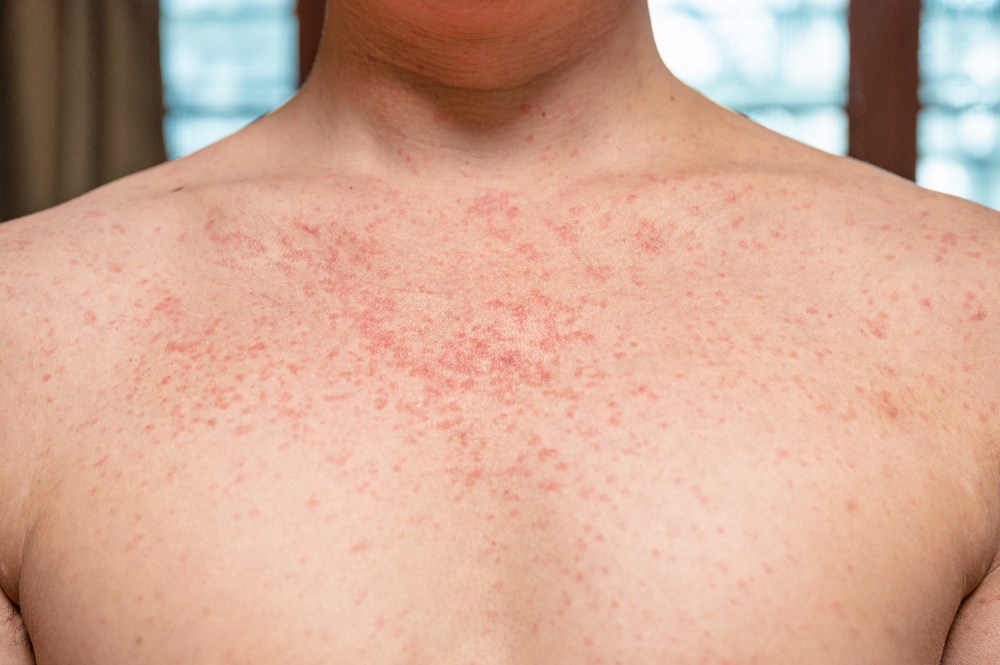In 2000, thanks to an effective vaccine with high uptake, the U.S. achieved a rare public health victory: zero cases of endemic measles transmission. But measles has persisted, with repeated outbreaks over the years, and it is having a big comeback. In the U.S., 23 cases of measles were reported over less than eight weeks in December and January, including seven cases brought in by international travelers and two outbreaks each involving more than five people. There was a thirtyfold increase in measles cases in Europe in 2023, with tens of thousands of hospitalizations and five deaths.
There was a thirtyfold increase of measles cases in Europe in 2023, with tens of thousands of hospitalizations and five deaths.
How did it get this bad? On top of pre-existing vaccine hesitancy and a thriving machine of misinformation and disinformation spread easily on social media, the Covid-19 pandemic led to supply chain and delivery interruptions and decreased access to routine primary and preventive care. Health budgets and personnel normally devoted to things such as community vaccination efforts were tied up in pandemic-related efforts. And in places where much of the care shifted to telehealth, that convenience also removed the opportunity to administer vaccines in the course of routine in-person visits.
Exemptions from vaccination play a significant role in outbreaks of preventable diseases like measles. While all states allow exemptions for medical reasons, and most allow religious exemptions, the area of greatest growth is in nonmedical, nonreligious, or “personal,” exemptions, which open the door for outbreaks.
Measles is a pretty terrible virus. Of those who become infected, 1 in 5 will need hospitalization, 1 in 20 will develop pneumonia and 1 in 1,000 will develop encephalitis (inflammation of the brain), and as many as 1 to 3 in 1,000 will die from these complications. Measles infection is dangerous during pregnancy, leading to miscarriage, low birth weight and preterm labor. It also has a terrifying late-term complication, subacute sclerosing panencephalitis, a fatal condition that can strike as late as a decade after the initial infection.
Measles is also highly contagious — one person with measles can transmit the disease to 90% of the incompletely vaccinated or immunocompromised they come into close contact with. To prevent outbreaks of the virus, 95% of people in a community need to be vaccinated against it. When we have a suspected or confirmed case in the hospital, the patient is placed in an isolation room that meets specific ventilation requirements and can be accessed only by those who are wearing N95 respirators and are immunized against the virus.

But out in the world, that same person can spread disease rapidly to those around them, especially in places where there are pockets of unvaccinated people and very young children (who won’t have completed the vaccine series yet). On Friday, a measles case in an infant was confirmed in San Diego, and according to the public notice announcing the case, the infected infant was taken to a restaurant, a park, a pediatrician’s office and then an emergency department. Others were potentially exposed at each of those locations.
High vaccination rates, such as those that once eradicated measles in our country, can mean a loss of generational memory of the diseases we defeated. At its peak in the 1950s, there were 3 million to 4 million cases of measles every year; it was transparently bad. As the disease disappeared, its specter did, too, meaning purported harms of vaccines, particularly for those receiving readily available misinformation or disinformation, seemed to be riskier than the forgotten disease. We need to raise the collective consciousness about the consequences of nonvaccination and the very serious nature of outbreaks to boost vaccination rates.
High vaccination rates, such as those that once eradicated measles in our country, can mean a loss of generational memory of the diseases we defeated.
Disturbingly, things appear to be trending in the wrong direction. Mississippi has had one of the highest vaccination rates in the country, with 99% of children fully vaccinated. In 1979, the state’s Supreme Court struck down religious exemptions to school immunization requirements because the “overriding and compelling public interest” of protecting children from the “horrors” of “diseases against which means of immunization are known and have long been practiced successfully.” For 40 years, Mississippi hasn’t had a single case of measles that originated within the state. (But in August, a religious exemption was granted, and health officials expect that remarkable record will end.)
Ten states have now reached exemption rates that make it impossible for them to reach their needed vaccination goals against measles. That is, even if 100% of the nonexempt children in a state get vaccinated, it will still be impossible for the state to reach an overall 95% vaccination rate against the virus.

There are a variety of approaches states have implemented to allow exemptions but ensure they remain relatively rare, leaving room for herd immunity. They include strengthening requirements for exemptions, incorporating parental education about the risks of not vaccinating into the process and ensuring transparency about high rates of exemptions in schools and programs. Some states have special provisions that exclude unvaccinated children from school or prohibit exemptions during active outbreaks.
Limiting exemptions must be paired with increasing vaccine and vaccine information accessibility. This includes continuing to expand where and how vaccines can be received, including pharmacist prescribing and administration and schools and child care centers, ongoing widespread community educational efforts and dissemination of in-depth and reliable information about vaccines.
Classic symptoms of the infection include the “3 C’s”: cough, coryza (runny nose) and conjunctivitis.
Early recognition of measles is also important. Classic symptoms of the infection include the “3 C’s”: cough, coryza (runny nose) and conjunctivitis; high fever; blue-white spots inside the mouth (called Koplik spots); and a characteristic rash. Quickly seeking medical attention when cases are suspected allows testing, confirmation of the diagnosis and prevention of further spread. Some people, including infants, those who are immunocompromised and pregnant women, are eligible to receive immune globulin to prevent illness after they’re exposed to someone with measles. Confirming who’s been exposed to a verified case allows people in these groups to get medical attention early enough for that preventive treatment.
Parents with young children should make sure they’re up to date on any immunizations that may have been skipped or delayed during the pandemic. Because the majority of cases and outbreaks start with those returning from travel abroad, a planned trip abroad is an especially good time for families to review their routine vaccination status.
Right now, staying safe from measles is complicated by the layered challenges of pre-pandemic vaccine skepticism, pandemic-era setbacks and increased world travel. It’ll take a concerted effort to take us back to the kinds of success we achieved two decades ago.
Dr. Esther Choo
Esther Choo, M.D. M.P.H., is an emergency medicine physician, health policy researcher and founding member of Equity Quotient, a company that advises organizations on building cultures of equity. She has provided commentary on the pandemic and other health care topics through appearances on MSNBC, CNN, the BBC and Yahoo! Finance and editorials published in The Lancet, the British Medical Journal, The Washington Post, NBC Think and USA Today.









